Growing Plants from Air-Layers
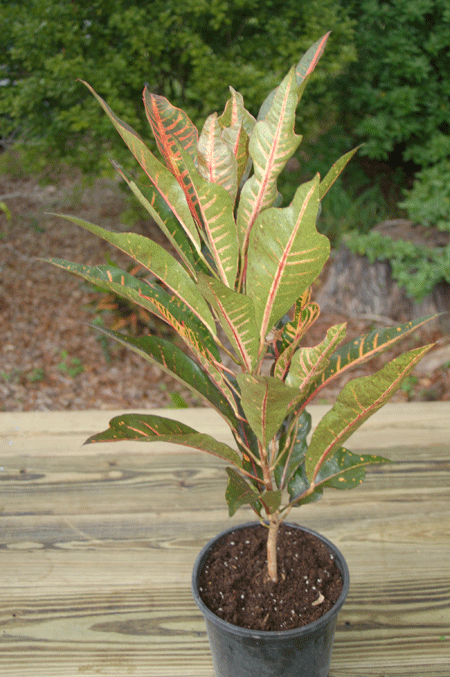
As Published in the Miami Herald
Growing plants from air-layers is a method of plant propagation that produces new plants that are genetically identical to the parent plant. This is a desirable trait if you are trying to maintain a characteristic such as superior fruiting or flowering. Air-layers do not typically work with monocots such as grasses and palms, but will work with most dicots.
 |
| Air-layers create instant plants. |
Air-layering will sometimes have a higher success rate than growing plants from cuttings because air-layering allows the new plant to grow roots while still attached to the parent plant. The best time of year to do air-layers is May through September.
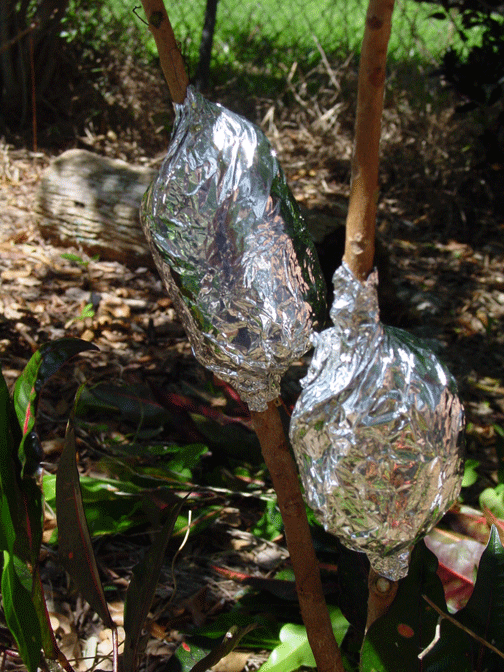 |
| Several air-layers may be made on the same tree. |
Getting Started
In order to make the initial air-layer, you will need: a healthy parent plant, a knife, moist sphagnum moss (place it in a bucket full of water, soak and then drain) and aluminum foil sheets (5” x 8”).
Multiple air-layers can be made on one parent plant. Air-layers can vary in size and width from 12 inches long and ¼ inches thick to 3 feet long and 7 inches thick. Smaller air-layers are generally more manageable than larger ones. To begin, find a vertical branch on the parent plant about the width of a pencil. About 12 inches down from the tip of the branch make a ring around the branch with the knife. When you make the ring, you should feel the knife go into the bark and then hit the woody portion of the branch. Do not cut into the woody portion of the plant, just ring the bark. Make a second ring about 1½ inches from the top ring. Then make a vertical cut that connects the two rings. If the plant is actively growing, you should be able to place the tip of your knife in the vertical cut and peel away the bark. This will leave you with a ring of exposed wood on your chosen branch.
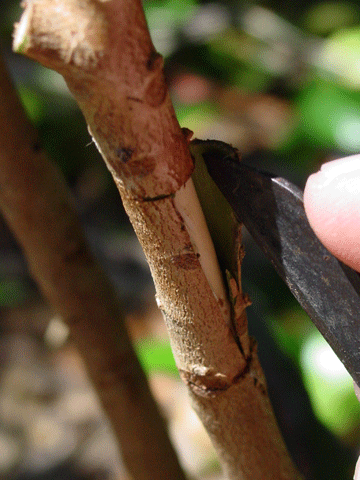 |
| Gently remove the phloem and cambim,. |
It is then necessary to gently scrape the exposed wood in order to remove a portion of the plant known as the cambium. The cambium is a layer of cells that is responsible for generating the bark and wood of the tree. If the cambium is not removed, the bark will re-grow and roots will not form. Because the bark and cambium have been removed, the flow of sugars to the roots is interrupted. New roots will form at the top of the exposed wood.
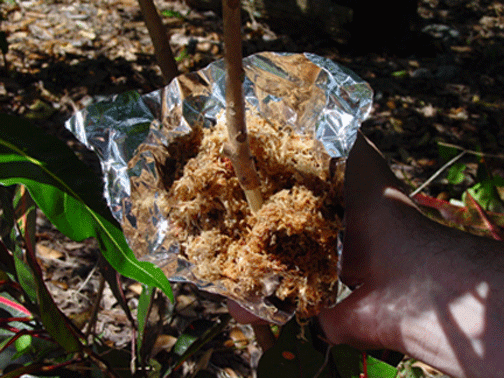 |
| Tightly wrap the sphagnum moss with tinfoil covering the exposed wood. |
In order to facilitate root growth, place the moist sphagnum around the exposed area. Gently squeeze it to remove some of the water so it is moist but not wet. Place a generous amount of sphagnum and hold it tightly in place with the aluminum foil. Twist the foil closed at the top and bottom of the working area. This can be repeated many times over on the same tree in order to make multiple air-layers.
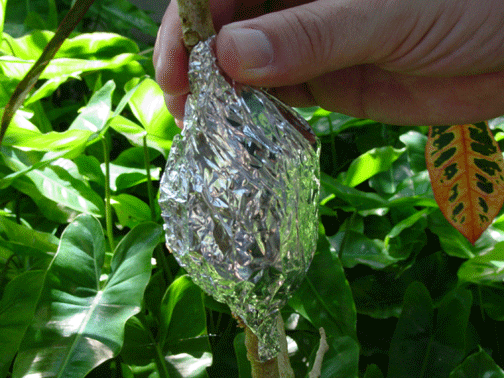 |
| The tinfoil should be snug to help retain moisture. |
The air-layer should be checked after three weeks for root formation. At this point, gently pull back the foil to look for roots. If roots have covered the sphagnum, the air-layer should be removed from the parent tree by cutting it just below the sphagnum-root mass.
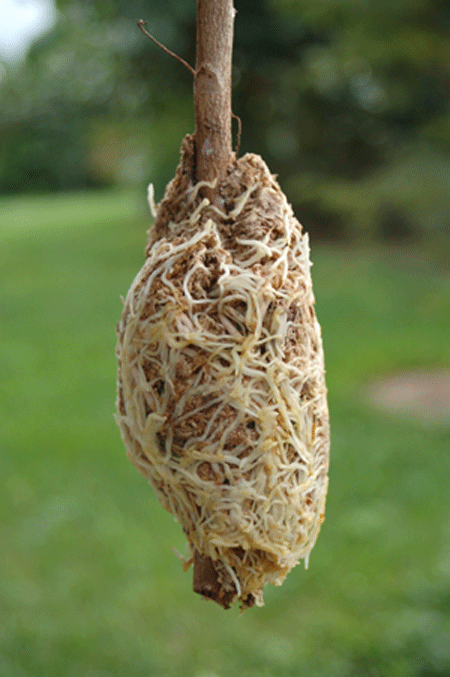 |
| Once roots form, remove the air-layer from the tree. |
Removed air-layers should be placed in a bucket of water and taken to a potting area. Remove the foil and plant in well draining soil. The air-layer should be potted in a two-gallon container with the roots placed below the soil line. The soil should be carefully packed around the tender roots. The air-layer should then be watered and may be given a liquid drench of a dilute solution of 20-20-20 fertilizer. The air-layer should then be placed in a protected area. A mist bench is preferred, but not as necessary as with cuttings. When the new container is filled with roots, the plant may be repotted or placed into the ground.
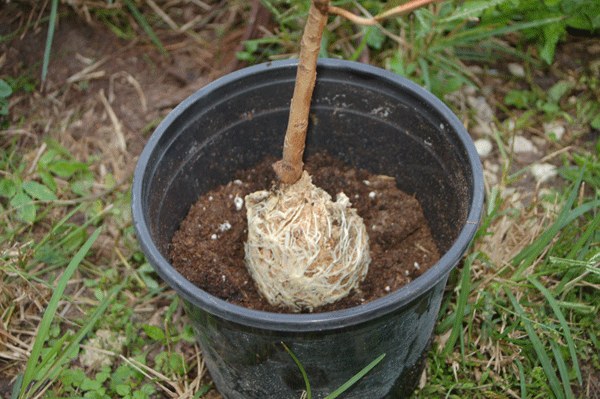 |
| Place the rooted air-layer in a container with well-draining soil. |
